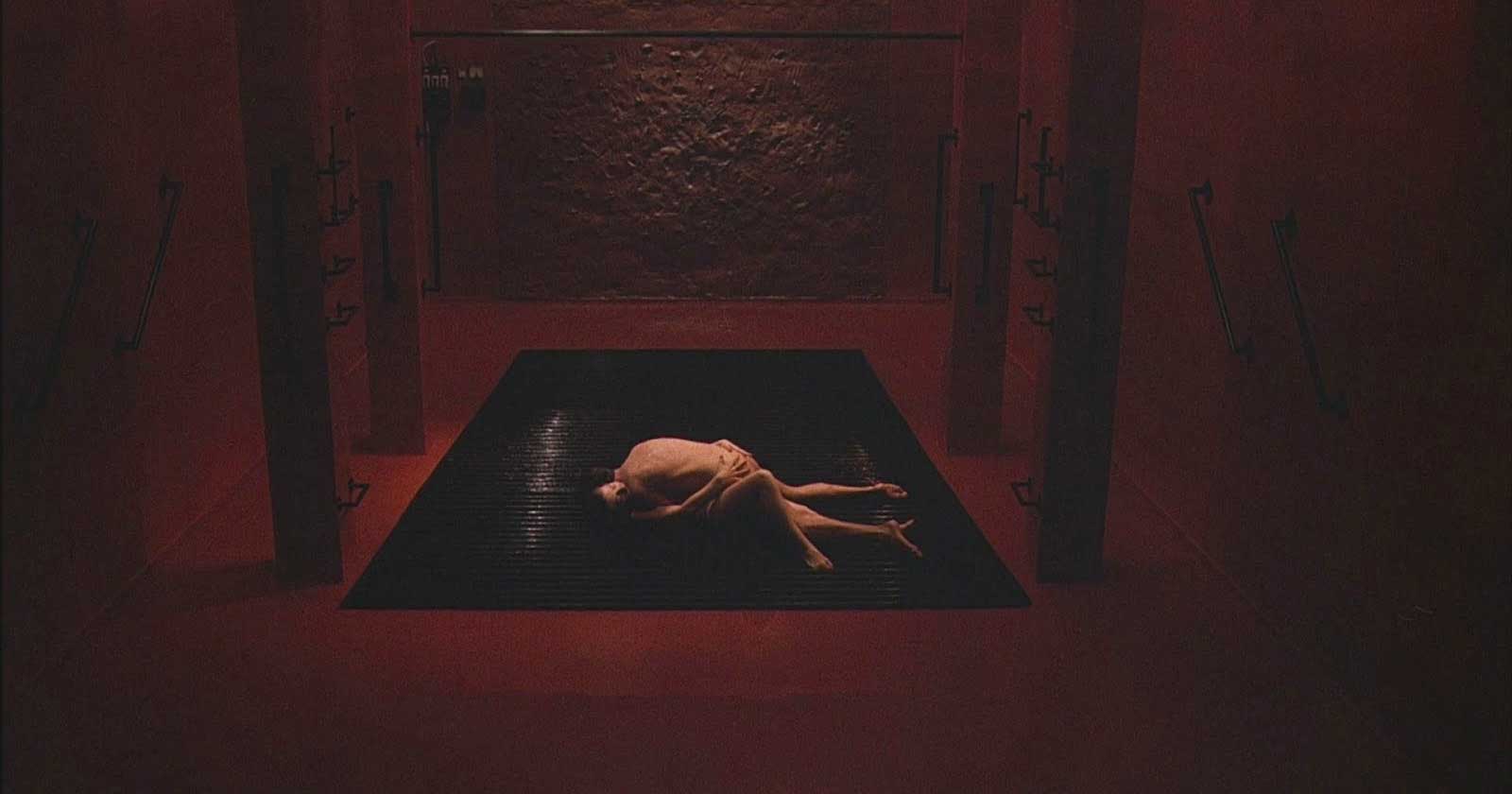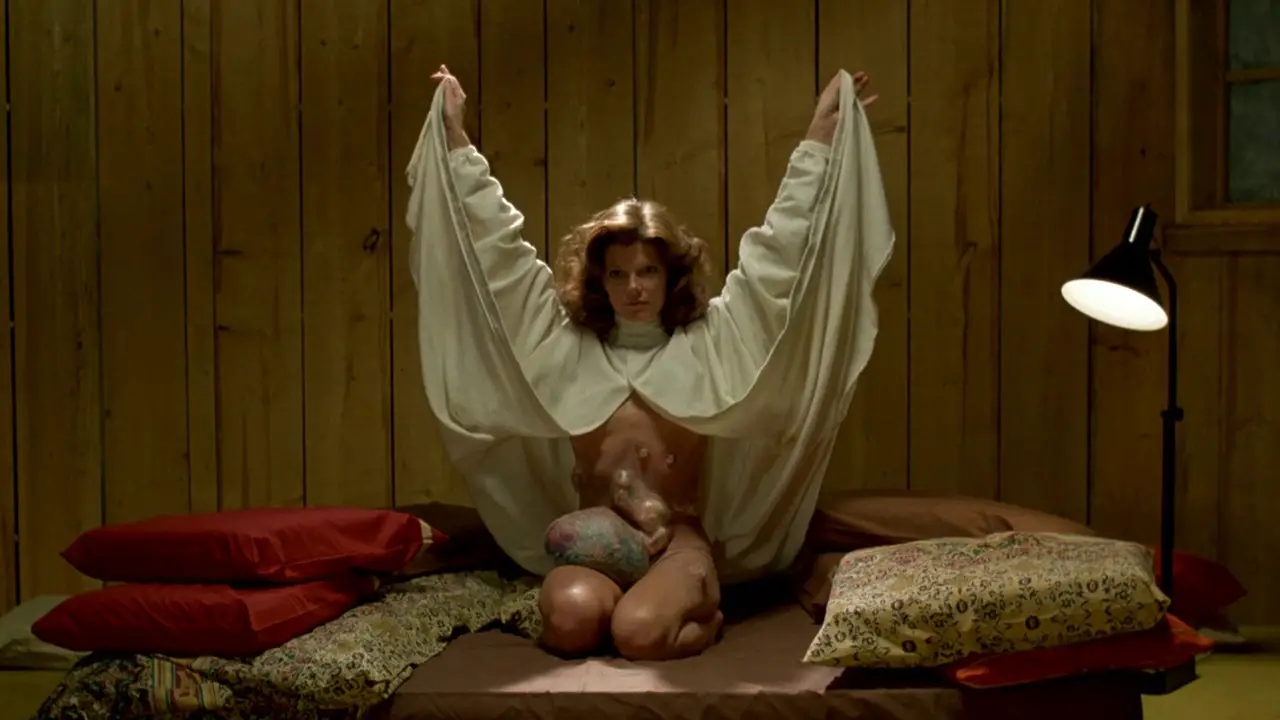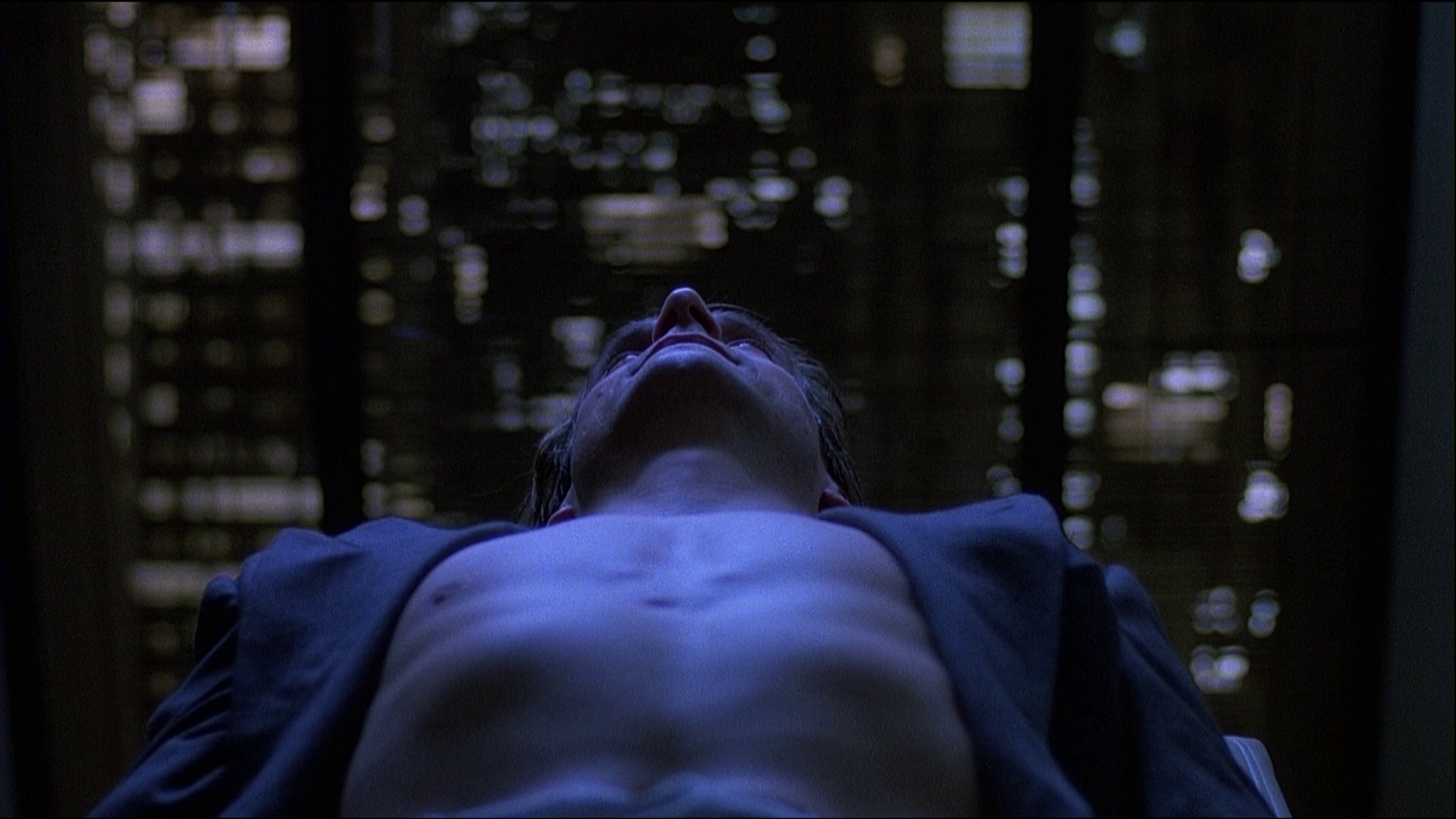How the visionary director from Toronto was able to capture and (make) visualize in his films the darkest and most "titanic" elements of the post-modern era
David Cronenberg (Toronto, March 15, 1943) certainly needs no introduction. His masterpieces have the supreme merit of being able to grasp some of the essential (and more "hidden") aspects of the reality in which we live, and this makes him one of the most important and influential directors of the contemporary era. The "vision" of him, especially in his more purely "science fiction" films, is based on an exasperated exaltation of the most sinister and macabre aspects of progress, both in the technological sphere and in that of anthropological changes and all-round sciences.
With Cronenberg's cinema we can speak in all respects of "Technological mysticism" as of Transhumanism. Furthermore, a “spiritual” substratum is present in its scenarios, enveloping and permeating for those who want to see it. This "bottom" manages to touch both the rational parts of the mind and those of the "emotional" type, both the "higher" intellect and the lower instincts. To the overall vision of a world thrown into a "concrete" abyss with no return, there are added all-round distressing sensations. In short, a real "torture for the unconscious", another typical element of the "esoteric" reading that we will make of his works.

On the basis of this approach we are able to grasp the true "hidden" elements of Cronenberg's cinema, namely: the omnipotence of matter; the absence of forms or rather the "cult of the formless and deformed"; pathos and distressing sensations of the worst kind; the domination of sexuality and low instincts; the pre-eminence of the sub-intellectual and psychoanalysis with its "demonic" inversions; the myth of the elect and the dream of conquering the world in the service not ofEmpire but of Chaos and destruction; the exaltation of technology and modernity; the apocalyptic prophecy. The analysis we will do will take place in a spiritually "detached" way, knowing full well that the two aspects of duality - "superior / inferior", "uranian / chthonic powers", "divine / demonic" - they are both bearers of knowledge.
Let's start from the preponderant aspect that characterizes much of science fiction filmography, and not just that of Cronenberg, that is the "Cult of matter". Matter is seen in a metaphysical sense, in a real philosophical-scientific “monism” regarding its capabilities and its power. IS this is the same conception that also emerges from the philosophy of Friedrich Engels, in Anti-Duhring for example, where the controversy with the scientist Eugen Dühring focuses on “apriorism”, an impossible logic for Engels. For these, in fact, nature and the universe are a simple chained succession of elements of matter, in all possible forms.
And the Spirit? Matter in other forms, the whole Marxist school would argue. While idealist philosophies of various kinds affirm that the Spirit is concretized in matter, in practice the “opposite” path. This principle, the metaphysics of matter, is, among other things, a cornerstone of Transhumanism, where there is no limit to the creation of matter: this is visible in the "paradoxical" aspects of soulless matter that creates other soulless matter (robotic) or that even excels over animated matter (the Human). And beyond matter and its logics? The question does not make sense, Carnap would say, generator of a scientific-mathematical based metaphysics opposite to that of Heidegger.
On the basis of this framework, let us examine the various corresponding elements present in some of David Cronenberg's films.

In Videodrome the “television interference” signal, the “Videodrome” signal, creates a brain tumor that produces hallucinations and alterations in the perception of reality - a real anthropological modification, therefore. So Max Renn, the "chosen one", who constantly absorbs the signal, is projected into a parallel world where all reality is deformed by the new "psychic" abilities of the protagonist. These abilities, however, are not those due to the acquisition of "higher" states of consciousness, but are concretized in the sub-intellectual aspects, the exact opposite "lower".
This opposition - between higher and lower, in "paranormal" mental powers - also emerges in Scanners and in particular in one scene: when Cameron Vale, a redeemed outcast and also "chosen", in view of the battle against Darryl Revok and the forces of evil, is prepared by doctor Ruth in a sort of "underworld" initiatory journey . Among his strengthening exercises, Vale is compared with a Yogi master, even winning the challenge.
The transhumanist conception is also clearly represented in eXistenZ, where the video game is accessed through a bio-door, a real one output fixed in the "lower" part of your spine - will it be a coincidence? Also path they are made of organic material, ie "amphibian eggs fertilized by synthetic DNA". A real manipulation of nature, which is evident in its most cutting and sinister tones with the “mutant” fauna present in the film. However, in all these films the aspect of Transhumanism is always present, with manipulations of electromagnetic waves, psychically empowering drugs and access to virtual universes through mortifying technological tools. Another mandatory consideration concerns how these masterpieces of cinema are similar to many other masterpieces, those of real life in terms of experimentation (eg bio and geoengineering).
The purely robotic aspect, on the other hand, is more present in Crash, Where the machine is considered to be the bearer of orgasmic energy, according to Vaughan's theory, a sort of "subversive of the transhuman era". Here, too, the "antithetical" and "inferior" element is configured as a carrier of growth. It is through the "destructive" car impact, the accident, that the car expresses its erotic and orgasmic abilities. And again in this regard, shocking to say the least is the scene in which one of the protagonists copulates with one of Vaughan's entourage, "penetrating" her prosthesis in her leg. As well as striking the part in which a sort of group masturbation is carried out, while watching the footage of car crashes.
Even in Rabid - Thirst for blood orgasm is generated in a similarly "destructive" way, when the protagonist kills her victims with a "phallic" sting (a form of transhuman androgyny) and bloodsucking ("The female vampire succubus of Man», Archetypal figure analyzed, among others, by CG Jung). The appearance of the "phallic woman" also recurs in eXistenZ, where the protagonist favors the "defloration" of her bodyguard, with the "rite" of installing the bio-door functional to the "virtual" game.

These aspects can also be cataloged within the metaphysics of sex. So the role played by the protagonists is important in Rabid with Rose and in eXistenZ with Allegra Geller - "revered goddess" and "ruler" of the "world of games". The latter in particular has an "androgynous" essence, in the "lower" sense of the term and opposite to Vîra of the tradition of ancient India. Allegra Geller is the bearer of a femininity that is not fully "realized" in its peculiar aspects, traditionally speaking, but which, being excelling, borders on the "masculine" domain.
The sexual sphere also comes into play with the "perversion" theme, linked toexaltation of the "limit" aspects of the body - sometimes deformed aspects, sometimes expression of sick minds to the nth degree. All this is present for example in Shivers - The demon under the skin. At the end of the film, Dr. Forsythe's assistant explains the "pansexualist" vision that underlies the whole medical-scientific project of the parasite introduced into the body for "beneficial" purposes (hence the title of the film), revealing, referring to the attraction towards the parasite, which «everything emanates a sexual energy, even illness, the skin of an old man, and yet the word itself is erotic». It is no coincidence that this generates a real all-encompassing sexual "pandemic". And the climax is in the final scene, when in the pool of "Noah's Ark" - the happy island sic! - all parasites indulge in an orgy based on sex and cannibalism.
Coming more properly to the theme of sexuality always in Crash, it expresses itself in morbid and degrading ways - if mental in a perverse sense, if physical in a mechanical sense. A conception of sex that immediately refers to Videodrome when in the Arena the sadomasochistic scenes that Nicky, Renn's lover was accustomed to. It is precisely through that disruptive violence, which also includes extreme sadomasochism, that the "Videodrome signal" expands and takes root in the mind of the spectator, Renn, causing him the "tumor" of the brain. Here too, making a parallel with reality, it refers to certain disturbances present in the minds of assiduous consumers of pornography. online, disorders not congenital but generated by exposure to videos.
The “sick” sexuality argument is also present in Crimes of future, when a little girl is brought into the clinic / laboratory for the purpose of being sexually used in some sort of "Scientific rite". It's just in movies like Crimes of future which is explored, then, the theme of omnipotent science and the will to dominate the world. This concept must, however, be understood in the opposite sense toEmpire Jüngerian or dedication to a "superordinate" principle. In the film, for gloomy ends, the teachings of the elusive Doctor Rouge are put into practice, manipulating the forces of nature and physics.

It also connects to this the archetype of the "mad scientist", who creates, or rather destroys, for the satisfaction of his Ego and in defiance of any law of spiritual elevation of his missionand an leitmotiv which also features Shivers, Rabid, Bread, La mosca, Scanners and in part Dead Ringers. However, punctually, the creations undergo the action of overturning, another archetypal operator hidden in Croneneberg's filmography, to the point of revolting against the scientist himself (La mosca e Scanners), or against the whole of humanity in a catastrophic end (Shivers e Rabid).
The theme of apocalyptic prophecy, typical of the "desert" religiosity of Middle Eastern monotheisms, is present in these last two films, but also in Videodrome with the prophetic Dr. O'Blivion ("Oblivion"?). This gives a further characterization to that sense of profound anguish, which moreover emerges in the director's entire work: an anguish that is not what increases and elevates, as in that moved by the knowledge of the Heideggerian "being", but an anguish that lowers, resets, "nientifies".
With regard to the psychic elements, we find a strong emergence and absolutization of the sub-intellectual ones, typical of psychoanalytic action. This is the case with films like Spider where the protagonist is a psychiatric patient, who weaves his web of conjectures, paranoia and false reconstructions of reality. Also important is the sentimental aspect poured into these reconstructions, all unmasked, then, by the matricidal ending.
This theme is also covered in Brood - The evil brood where Dr. Raglan is a real manipulator of the psyche of his patients. Thanks to this "competence", always for "beneficial" purposes, he builds a psychoanalytic method - the "psychoplasmy”- which when applied causes changes so profound as to shape all matter, the human body in this case.
The sub-intellectual also emerges in The Naked Meal, film inspired by William burroughs, and how he could not in this case, being he one of the fathers of Chaos Magick. In this film based on the use of “black meat”, an insecticide that turns out to be a powerful hallucinogen, the protagonist immerses himself in surreal scenes animated by aliens, insects and giant crustaceans. But he eventually realizes that he is part of a gigantic intergalactic conspiracy hatched by various organizations. This last element, the conspiracy, is also present in Videodrome or Scanners - fantasies similar to reality, also in this case.

The field of medicine or other bodily experiments is of interest Shivers, Rabid, and La mosca (with Dr. Brundle's teleportation), but most of all it clearly reveals itself in Dead Ringers - Inseparable. Here it is in relief a "deviant" but also very "real" medicine, which imagines the person only in his absolutized "bodily" aspects, separated from the psyche and invested with a completely "irrational" imagination. Also in this case, how can we not think of the darker implications of contemporary medicine in the present, than in Dead Ringers they are all present: uterine modifications, abuse of psychotropic drugs, sentimental manipulations and technological tools that, although imaginative, do not differ much from the principles behind the latest medical-scientific advances.
We can therefore trace an overall portrait of these works under the banner of a initiatory journey but inverted. A "Descent without ascent", a catabasis which by its essence and structure excludes any possibility of get out of it need observe the light. The possibility that according to René Guénon characterized Dante's esotericism, that is, of go up, from Hell to Heaven, is completely reversed in a descent to the bitter end that fully affirms the proverb according to which "the worst is never an end".
The last important note is for the soundtracks: all capable of encouraging feelings of loss, exasperated loneliness and anguish. A total surrender of Man in the face of the excessive power of the forces of the underworld and of matter, used by dangerous sorcerers and with a single purpose, albeit often unconscious: dissolve and destroy.

6 comments on “David Cronenberg: the Demon in Matter"